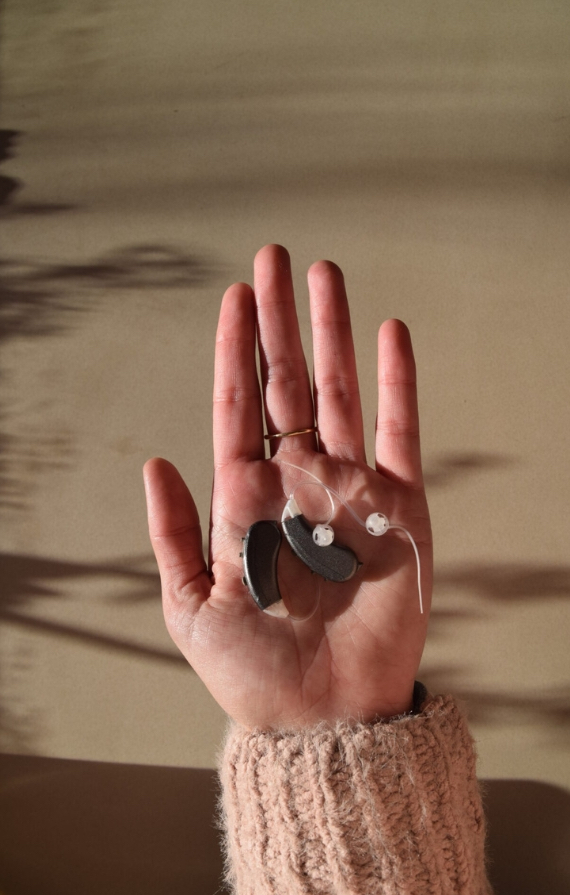
How To Buy Your First Pair Of Hearing Aids
I got my first pair of hearing aids in 2020. I’d known about my hereditary hearing loss for years but wasn’t ready to take the plunge. Sometimes I missed jokes and couldn’t hear family members from the other room, but I was getting by just fine.
“Every day, I was pulling away from conversation and interaction — not great for a self-proclaimed extrovert.”
Then, in 2020, everyone started wearing masks, and my ability to read lips was gone. I began avoiding neighbors on my street. At the hotel check-in, I stepped back to let my wife do all the talking. Every day, I was pulling away from conversation and interaction — not great for a self-proclaimed extrovert. It was time to do something.
On a Saturday morning in late April, I sat down with my laptop and started to research. The first thing I noticed was that hearing aid technology has come a long way in the last 10 years. Modern devices come with Bluetooth streaming, 30+ hour rechargeable batteries, and built-in AI-powered noise management.
“I also realized that ‘getting started’ wasn’t as simple as I had hoped.”
I also realized that “getting started” wasn’t as simple as I had hoped. There were many decisions to make and no clear place to organize them. The research phase took me days of sifting through YouTube videos, product manuals, and Yelp reviews.
So, if you (or a loved one) are turning up the TV, missing dinner conversation, or simply looking for an upgrade, think of the notes below as a guide to getting started. I hope working through the checklist below helps!
First, a few facts about hearing loss
- According to the National Institute of Health, around 15% of adults have hearing loss. Research from the Lancet indicates that the likelihood of hearing loss doubles every decade, and about half of 65-year-olds have hearing loss.
- Treatment of hearing loss has implications beyond simply communication. According to research from Johns Hopkins University, untreated hearing loss leads to 3x more falls and a higher risk of memory loss.
- The average price of hearing aids in 2024 is around $4,500, but prices range from $300–$10,000 for a pair, depending on technology and care.
- In 2022, the FDA created a new class of over-the-counter hearing aids to bring down prices and increase access. (More on that below!)
Feeling less alone in all of this? Good. Now, keep those facts in mind as you read on for your checklist — and let’s find the right pair of hearing aids for you.
1. Know your hearing loss.
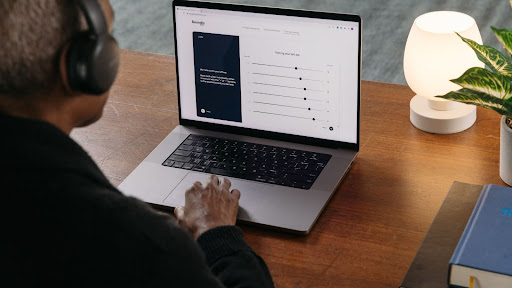
Self-assessment is the first step in the process. Hearing loss often creeps in over time, and our brains greatly compensate. Therefore, it’s hard to pin down exactly how much hearing loss you are dealing with without a test.
Hearing tests are often free or covered by insurance at a local audiologist or ENT, but for folks who aren’t ready to head to a clinic, free online hearing tests like this one offer reasonably accurate results within 5-10 minutes. You’ll need a decent pair of headphones and a quiet room to ensure accurate results. Regardless of your test method, the next step is understanding your results. Here’s a breakdown with typical examples.
Your hearing test maps the severity and shape of your hearing loss (from low to high frequencies). Take note of your hearing loss level: Mild, moderate, severe, or profound. This information will be vital as you choose a care method in the next step.
2. Choose your care method.
With your test results in hand, it’s time to choose a care method. This step is perhaps the most critical in making sense of your hearing health decisions because it directly impacts the price you will pay and the brands you can access. Let me explain.
There are generally three models of care in the hearing aid world: In clinic, telehealth, and over-the-counter.
In clinic

The first and most common way to buy hearing aids in 2024 is at a local audiology office. A local office will schedule an appointment, test your hearing, and program a set of prescription devices specifically for your loss. Typically, you will physically come back for follow-ups, but in some cases, your doctor can make remote adjustments after an initial in-person fitting. Around 40%-50% of patients can expect their insurance to offer a discount or cash benefit for this model of care.
In clinic pros:
- Hands-on care
- Top-end devices customized to your loss
- Rule out ear disease and earwax
In clinic cons:
- Prices range from $3,500–$7,500/pair
- Requires travel time, access, and visits to your local clinic
- Sometimes includes longer wait times for appointments
Telehealth
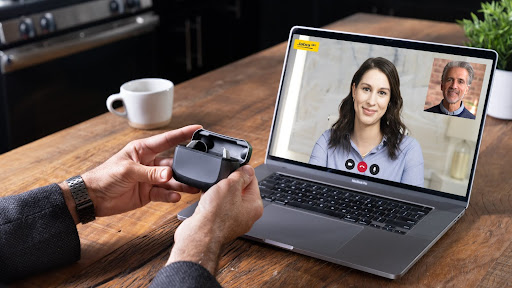
The second way to buy hearing aids is through telehealth, which is sometimes called direct-to-consumer. Customers order their hearing aids over the phone or online, take an online hearing test, or submit results from a local test, and the brand ships programmed hearing aids to their door.
Follow-ups are often conducted by a doctor, with tuning completed via video, text, and phone calls. Most insurance networks do not cover this model of care, but the end price tends to be lower than local clinic care even after benefits.
Telehealth pros:
- Prices range from $1,195–$2,995/pair
- Less driving and waiting room time
- Easier access to follow-up appointments
Telehealth cons:
- Requires some tech-savviness
- Not a good fit for those with severe or profound hearing loss
- Sometimes there are more limited brand options
Over-the-counter
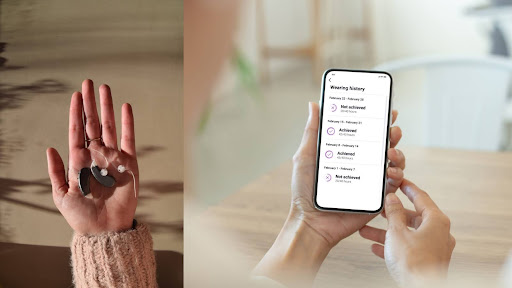
The third way to buy hearing aids is over-the-counter (OTC). OTC hearing aids come without any customization to your specific hearing loss and give you the controls via an app. Brands like Bose, Sony, and Sennheiser have entered the market with their own versions of this technology. Most brands include customer service (similar to other consumer technology) but no professional care.
OTC pros:
- Prices range from $300–$2,500/pair
- Typically easy to purchase and set up
- No waiting for professional involvement (app controls are on-demand)
OTC cons:
- Less precise programming
- Very little hands-on support
- Not a good fit for those with severe or profound hearing loss
- Some products are less advanced
3. Choose a hearing aid style.
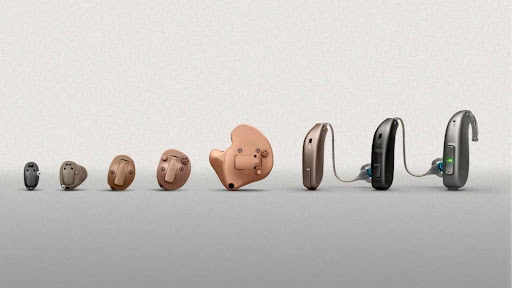
Hearing aid styles are grouped into two big categories: Behind-the-ear (by far the most common) and in-the-ear. I’ve tried both styles but ultimately wear behind-the-ear devices for their all-day comfort and higher-level technology. Note that many in-the-ear devices do not come with Bluetooth streaming or rechargeable batteries, something to consider as you browse. Take a look at the image to the right to get a sense of the scale of different hearing aid models.
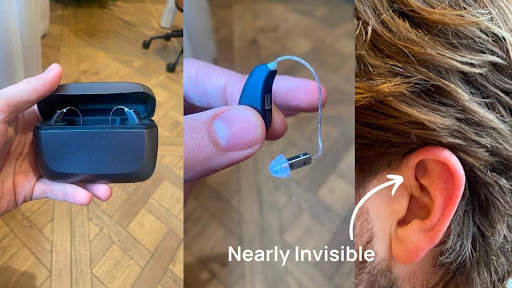
Behind-the-ear options are nearly invisible for anyone with longer hair, with a tiny wire reaching the ear. I’ve included an image here of my own behind-the-ear hearing aids so you can see just how inconspicuous they are. Most in-the-ear options come with protective, ready-to-wear sleeves, and some will even be custom-molded to your ear canal. Ultimately, it’s down to your preference and what works for your lifestyle. If you still have questions, here’s a full guide to choosing a hearing aid style.
4. Make a shortlist.
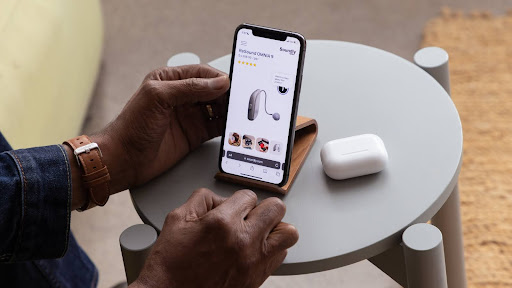
It’s finally time to make a hearing aid shortlist of products you’re most interested in. If you are anything like me, you may be tempted to start comparing brands and products immediately without taking steps #1–#3. Resist the urge! There are 100+ brands on the market, but those options get much more manageable with a hearing test, care model selection, and style choice in hand.
Everyone’s shopping process is different, but I suggest picking 2–3 products that fit your criteria and hearing loss. From there, read or watch a few reviews and make your final selection.
You can use sites like soundly.com to sort through brands, care methods, and styles. I also publish a monthly guide to the best hearing aids on the market.
“Most people need weeks or months to adjust to levels of sound that they may not have heard in years.”
Once you’ve done your research, take the plunge. Remember that nearly all hearing aids across the care spectrum come with a 45-day return policy. Use that to your advantage and put your new devices to the test.
Unlike glasses, hearing aids aren’t an instant fix and take some getting used to. Most people need weeks or months to adjust to levels of sound that they may not have heard in years.
Still, if your devices aren’t helping after a few weeks, there’s no harm in sending them back and trying something else. Be patient with yourself through this process, and if you’ve opted to work with a professional, communicate often about your experience. You can read my complete account of getting used to hearing aids here.
“Be patient with yourself through this process, and if you’ve opted to work with a professional, communicate often about your experience.”
Getting your first pair of hearing aids is a big step. There’s the research and cost but also a mindset shift. As I adjusted to amplified sounds, I noticed that I wasn’t straining to pick up words, and I re-engaged in sonically challenging situations with more confidence (masks included).
Like any skill, learning to use — and trust — my hearing aids took time, but the impacts have been well worth it. I now view my hearing aids much like my phone or laptop: They are tools that help me successfully navigate the world around me more easily and confidently. Now you’re on the path to finding hearing aids that work for you too.
Blake Cadwell is the CEO of Soundly, an online marketplace that streamlines the process of searching for and comparing hearing aids through shopping tools, access to professionals, and online hearing tests.



